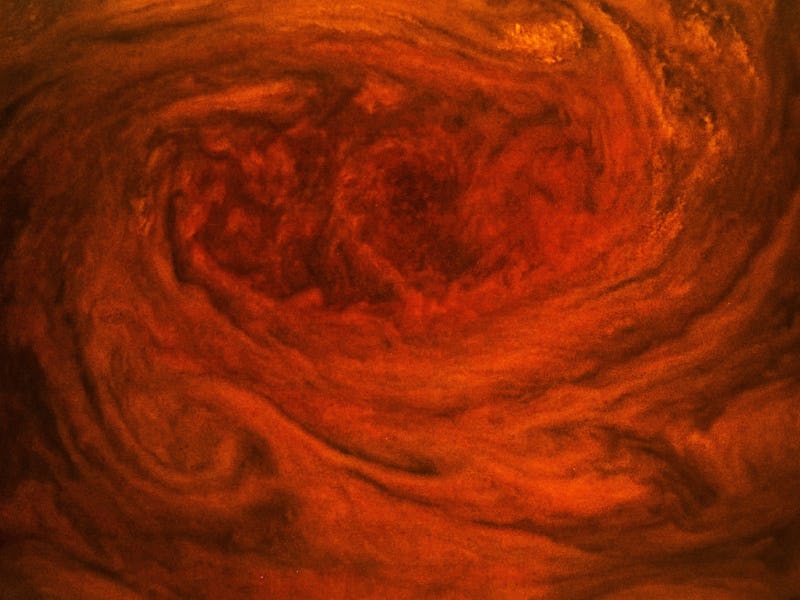Juno Sent Back the First Stunning Images of Jupiter's Great Red Spot
The spacecraft passed over the storm for 12 scintillating minutes.

On Tuesday, NASA’s Juno spacecraft zipped by Jupiter’s Great Red Spot, and, for 12 minutes, it stared down into the ancient, roiling storm.
By Wednesday afternoon, Juno had transmitted the clearest digital images yet of the Great Red Spot, which were then captured by NASA’s 230-foot wide Deep Space Network antennas, enabling the space agency to release humanity’s closest ever view of the crimson mystery.
NASA scientists don’t have time to immediately process all the photos themselves, so the space agency made the raw images available for anyone to process and share with curious Earthlings everywhere. Space fanatic and graphic designer Jason Major just processed and tweeted out an image of the Great Red Spot, shown below; hundreds more images are rolling in and being uploaded by NASA.
Juno passed just 5,600 miles above the Great Red Spot, shooting the storm with JunoCam’s wide field of view to create long panorama-like images. When the spacecraft neared Jupiter’s equator, JunoCam boasted an impressive resolution of nearly two miles (really, three kilometers) per pixel, and about 30 miles per pixel (50 kilometers) when shooting images over the poles.
Before Juno, the best shots of Jupiter came from the Voyager 2 spacecraft, which passed by the gas giant nearly 40 years ago, in 1979.
NASA scientists have yet to comment on the storm, but it’s certain that they’re scouring the images as they drop down into the agency’s Deep Space Network satellite dishes, strategically spread out around the globe in California, Spain, and Australia, to ensure that they don’t miss any incoming storm data.
It’s unknown if the storm’s baffling behavior will be cleared up, along with colliding systems around Jupiter’s south polar region and elsewhere. At the very least, JunoCam has given us an opportunity to look into the eye of the Great Red Spot, a curiosity that humans have been watching from afar for nearly 200 years.
A close-up of the Great Red Spot, shot by the JunoCam, captured on Earth by NASA, and processed by citizen-scientist Sean Doran.